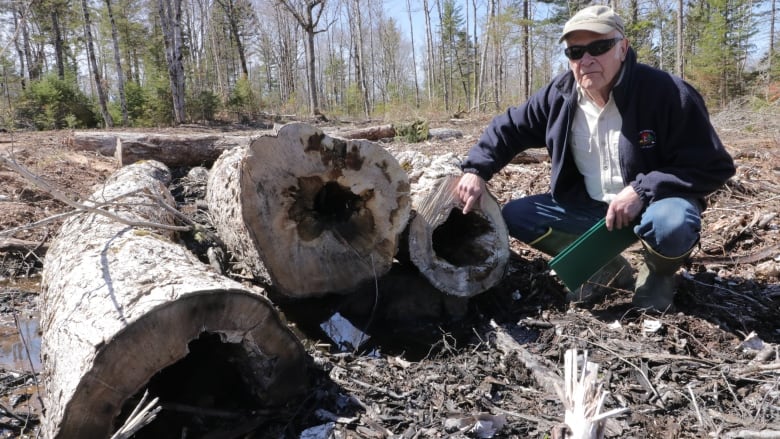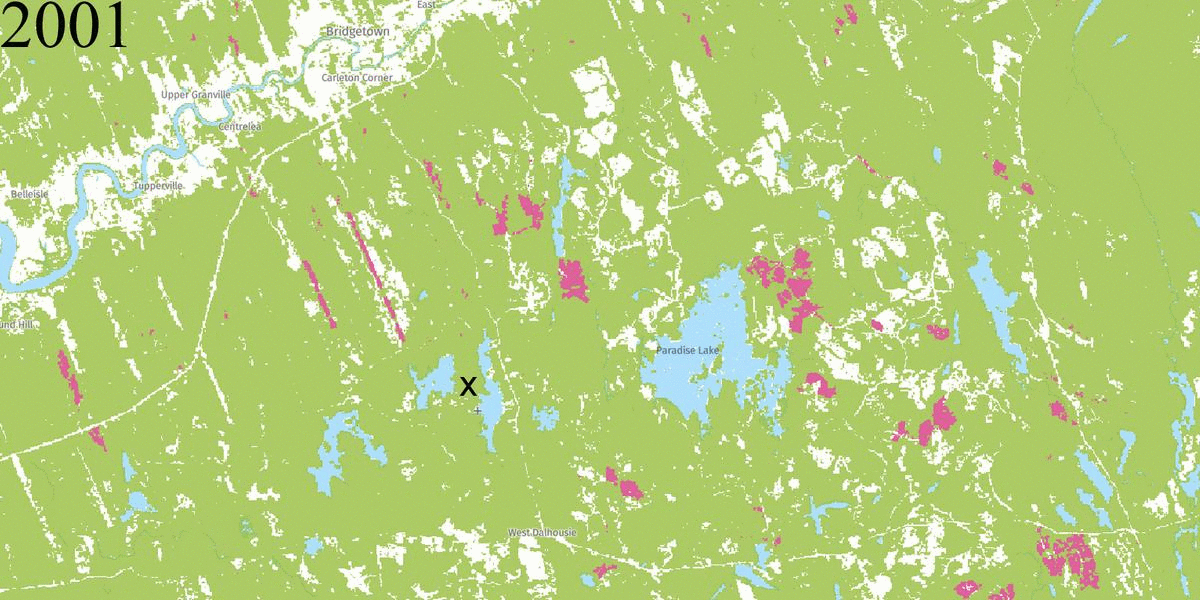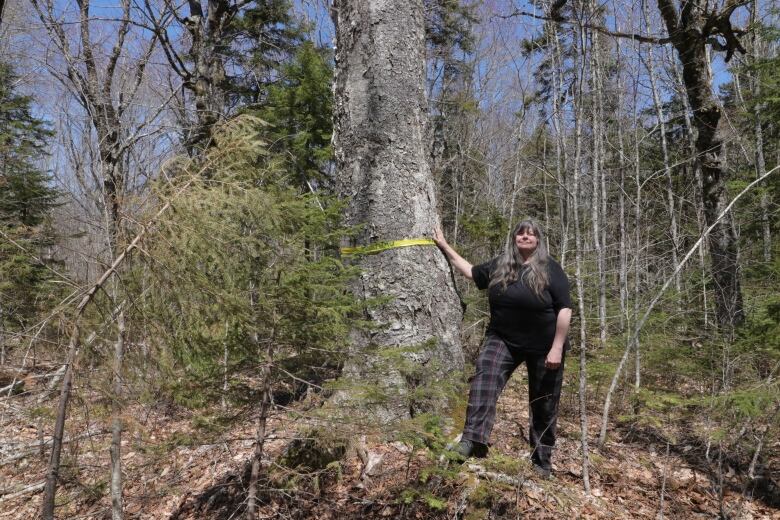Cutting down trees in old hardwood forest 'scandalous'
Wildlife biologist Bob Bancroft says there are few old hardwood forests remaining

A well-known wildlife biologist iscalling on the provincial government to stop an "outrageous" move to continue harvesting wood from an old forest in Annapolis County.
WestForManagement Inc., a sawmill consortium, has the right to harvest wood from a parcel of Crown land a mixed-age, multi-speciesold forest.Some of its treesare estimated to be up to 200 years old.
While WestFor said its harvest willpromote the growth of hardwood trees, Bob Bancroft isn't convinced, saying the diversity of the forest allows a range of different animals to thrive.
"This is public land, and it's outrageous that people are gonna be able to tear this apart, 'scientifically,' they say," said Bancroft, who's been studying forests since the 1960s.
"It's actually forest mining is what they're doing: to take this and tear it apart when there's so little of it left in the province. It's scandalous."
The parcel of land measures 21.46 hectares and is located about 10 kilometres south of Bridgetown, between Corbett and Dalhousie lakes.
Forest an important habitat for wildlife
"It's a vibrant, beautiful forest," said Bancroft.
"We're surrounded by old yellow birch, and red maple, and sugar maple, and there's a bit of striped maple and beech. So it's mostly hardwoods."
Bancroft said the parcel is home to a number of mammals and birds. Fishers, owls, woodpeckers, flying squirrels, black-throated warblers, even some moose, have been noted.

He said the forest is one of the few he's seen that hasn't been compromised by human activity, describing it as a forest in a seaof clearcuts.
The forest needs to stay to allow the animals to flourish, he said.
"There's an illusion about the kind of cutting that's done that the animals just wander off," said Bancroft.
"Well, if there's ground somewhere else that's got the right habitat for them, it's usually occupied by those species. And the other thing they do is die. They just wither away and die."
WestFor began its operations in the forest last falland is expected to resume any day.
Response from WestFor
Marcus Zwicker, general manager of WestFor, said the company plans to cut about 35 per cent of the trees on the site on an individual basis.
"We're trying to maintain and create old forest attributes," he told CBC's Information Morning.
"We're removing the [shade] intolerant species like balsam fir, white birch, some of the red spruce that's dying, and trying to promote the growth of the hardwood forest."
He said the forest'solder trees like the yellow birches, which could be up to 200 old, will be left alone. Instead, the company will focus on trees age60-80.

Zwicker said the harvested wood would go to hardwood sawlog mills, before going to other sawmills to be made into everyday hardwood products.
A "very, very, very small percentage" will go to the Northern Pulp mill, he said.
When asked how much sympathy he had for those who wanted to see the forest remain intact, Zwicker said he didn't know how to answer the question.
"We're doing our best to maintain the characteristics of the forest. That's part of our standard operating procedures," he said.
Older trees must be preserved, says naturalist
Despite Zwicker's explanation that WestFor will be selecting trees on an individual basis, a Crown land harvest plan maptells a different story.
A map from the Nova Scotia Department of Natural Resources indicates the cutting prescription for the parcel is "uniform shelterwood" which is similar to clearcutting, except it's done in stages andleaves some established trees to allow new seedlings to grow.
The parcelwasonly visible on the map for just a few days between late December 2018 and early January 2019.

Naturalist Bev Wigney said the cuttingsystemdoes little to protect the mature trees that may have been around before Canada's confederation.
She has two favourite trees in the forest. They are towering yellow birches she estimates to be two centuries old.
She's tied caution tape around them, along with some other trees, to indicate that they should be preserved.
"I'm hoping that that'll make the logging crew actually look at that tree a little bit more," said Wigney, a member of the Annapolis Royal and Area Environmental and Ecology group.
"I mean, we don't want them to cut, but if they do, there's what I think are important trees that should be left alone."

'Every tree matters'
During the last round of cutting, logging crews felled a 138-year-old beech tree, said Wigney, who counted the rings.
"It becomes a personal thing," she said. "Arewe gonna just let these guys cut it down? Because once it's gone, it's gone."
A councillor for the area said the provincial government, WestFor, and the municipality needs to "hit the pause button" on logging in this area.
"In the last five-to-10 years, everything has changed dramatically on what we know about ecosystem services, what we know about climate change, what we know about species diversity and extinction," said Gregory Heming.
"We're in a period now where every tree matters."
CBC News has reached out to the province for comment.
With files from Information Morning












_(720p).jpg)


 OFFICIAL HD MUSIC VIDEO.jpg)
.jpg)



























































































